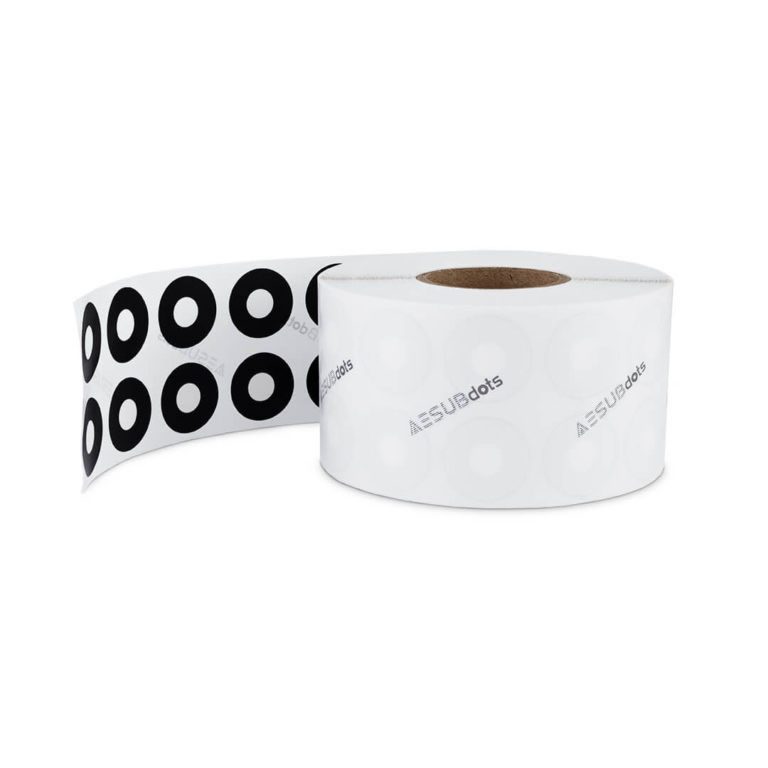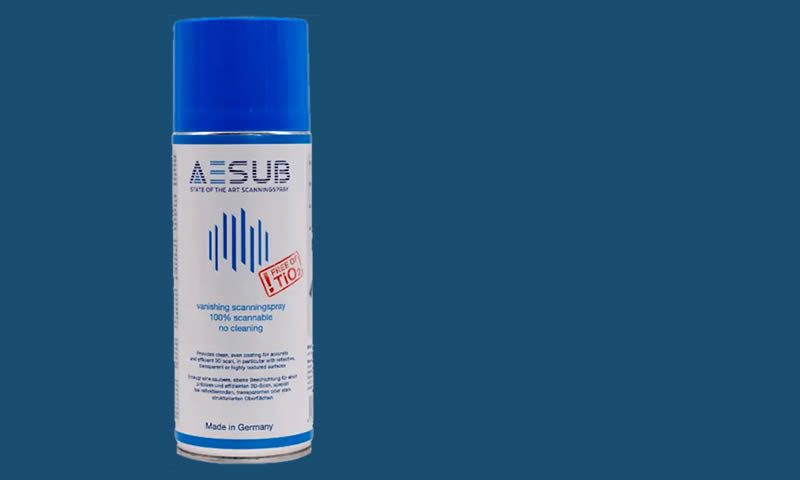Summary. Dive into the utilisation and benefits of 3D Scanning Reference Targets, outlining how they enhance scanning precision and data repeatability. We provide targets in two versions, designed for different scanner types, and they act as crucial guides during digitalisation, significantly improving scanning accuracy and consistency. The article also underscores the amplified effectiveness when using reference targets alongside our scanning sprays, delivering exceptional clarity and quality in scanning results.
At AESUB, we endeavour to provide our customers with cutting-edge equipment to optimise the 3D scanning experience. So whether you’re looking to buy 3D scanning sprays to ensure that all elements of your application are scannable, or you could benefit from further guidance using our 3D scanning reference targets, we cover all grounds.
We offer two types of reference points suited to both structured light and laser light 3D scanners. Both variations share the same purpose of marking three-dimensional objects during digitalisation. As the leading reference target manufacturer on the market, we have carefully designed our markers to bring convenience and consistency to scanning.
But how much difference do they make?
What are 3D scanning reference targets?
As previously mentioned, our markers serve as guidelines when placed on an object. Many 3D scanners recognise these reference points, enabling their software to determine the exact location of each one. They’re in the form of small circular stickers that use low tack adhesive. These 3D scanning accessories are available in rolls of 3000 or 6000 markers from us here at AESUB.
There are two variations of our 3D scanning reference targets too. The AESUB dots black & white version are specifically suited to structured light scanners. Whereas our AESUB dots retro option is retroreflective, meaning they reflect the lasers to their source. Both act as high-contrast pinpoints to assist scanners in gauging the dimensions of an object.
Why should you use reference targets?
There are many benefits to using reference targets when 3D scanning. Not only do reference targets offer ease of visibility to scanners when identifying the shape and dimensions of objects, but they ensure excellent results too.
Increased Accuracy
In the exact nature of connect-the-dots, markers offer immense precision when scanning small and large objects. As you probably know, 3D scanners have optimised data collection over recent years, allowing users to replicate to the finest detail. And by using 3D scanning reference targets, scanners have even more capability of analysing even the most complex shapes.
Repeatability of Data
Secondly, this level of accuracy can be maintained with even more ease when reference targets are involved. When kept in place, your scanner will be able to re-scan the object to the exact target areas. Therefore, you will be able to gain the same precise data if needed further down the line.
Reference Targets In Conjunction with Scanning Spray
Using our 3D scanning reference targets alongside AESUB scanning sprays delivers matchless quality and clarity in your results. Apply the spray first, then seamlessly place the dots on the surface. This combination provides outstanding direction and lucidity for exceptional scanning outcomes.
FAQs about 3D Scanning Reference Targets
What are 3D scanning reference targets?
- 3D scanning reference targets are small circular markers used to improve the precision and accuracy of 3D scans. They serve as fixed points that scanners recognize to determine the exact location and dimensions of objects during the digitalisation process.
Why should I use reference targets in my 3D scanning projects?
- Reference targets enhance the visibility and accuracy of scans, ensuring that even the most complex shapes are captured in detail. They help maintain consistency and repeatability of data, making it easier to re-scan objects with precise results.
How do reference targets improve scanning accuracy?
- Reference targets act like high-contrast pinpoints that help the scanner’s software identify and measure the dimensions of objects with precision. This ensures that every detail is captured accurately, significantly enhancing the overall quality of the scan.
Can reference targets be reused for multiple scans?
- While the primary purpose of reference targets is to ensure repeatability of data, their reuse depends on the adhesive and the condition of the target. Typically, reference targets are designed for single-use to maintain their high-contrast and adhesive properties.
Where can I buy AESUB 3D scanning reference targets?
- You can purchase AESUB 3D scanning reference targets directly from the AESUB UK website. They are available in rolls of 3000 or 6000 markers, suitable for various scanning needs.
Get in Touch With Us Today.
Suppose you’d like to learn more about our 3D scanning reference targets and how they can make your scanning experience straightforward and coherent throughout. In that case, our helpful team is always at hand to answer any questions. Either contact us via email at info@aesub.co.uk.
Check out a previous blog to learn more about our products: The Benefits of 3D Scanning with Scanning Spray


